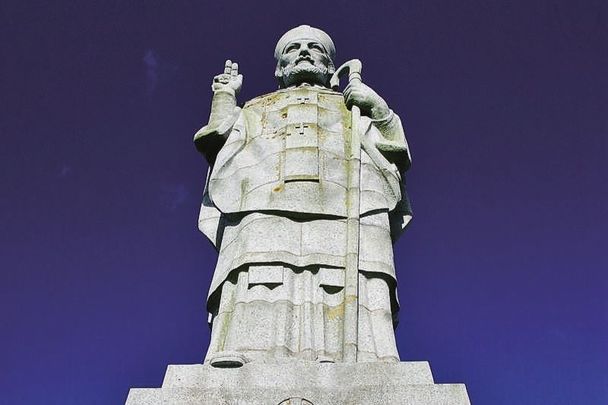A book by an author based in Co Wicklow claims that St. Patrick was born in France and not Britain.
‘Rediscovering Saint Patrick: A New Theory of Origins' was published by Irish publisher Columba Press in 2013. The author, Church of Ireland clergyman Rev Marcus Losack, claims he unearthed evidence suggesting that Ireland’s patron saint had a "French connection".
The book is the fruit of four years of extensive research in the search for evidence to support the claim that St. Patrick was originally from Brittany, France.
"Our traditional understanding of St Patrick's origins is wrong," he told the Irish Independent, in 2013.
"This book challenges our traditional understanding of St Patrick and therefore the origins of the Irish Church. In a way, it also challenges our traditional understanding of our own heritage and culture,” Rev Losack said.
Legend states that a man who brought Catholicism to Ireland was captured by pirates in Britain and sold into slavery in Ireland.
“At that time, this place was called Bonavenna de Tiberio. In St Patrick’s Confession, he tells us he was taken captive when Irish pirates attacked his father’s house at ‘Bannavem Tiburniae’ in Latin.”
“The names bear an uncanny resemblance and three other place names mentioned in St Patrick’s writings also tie in with areas around the Chateau de Bonaban.
After four years of research, Rev. Losack claimed St. Patrick came Brittany not Britain.
“Patrick tells us that the Wood of Foclut was beside the Western Sea and most scholars have always thought that the Wood of Foclut was in County Mayo. I would be challenging that now and suggesting that maybe it was in Brittany and that it was next to the place where he was taken captive and not where he was held captive in Ireland.”
Rev Losack said: "The established theory which most scholars accept is that he was taken captive from somewhere in Britain – some say Scotland, others Wales and others say south-west England. But there has never been any real evidence provided to support that tradition."

Celebrate everything Irish this March with IrishCentral's global community.
When he visited Chateau de Bonaban near St Malo in Brittany, the author learned the site upon which the chateau was built contained remains dating from the Roman era.
Local history suggests St. Patrick’s father Calpurnius, a Scottish noble settled there to avoid Saxon forces who were invading Britain.
"At that time, this place was called Bonavenna de Tiberio. I was dumbfounded. In 'St Patrick's Confession' he told us he was taken captive when Irish pirates attacked his father's house at 'Bannavem Tiburniae' in Latin."
“What has been missing is really conclusive local evidence,” he explained
Rev. Losack called for an archaeological excavation to be carried out on the site.
* Originally published in 2013, updated in March 2023.




Comments